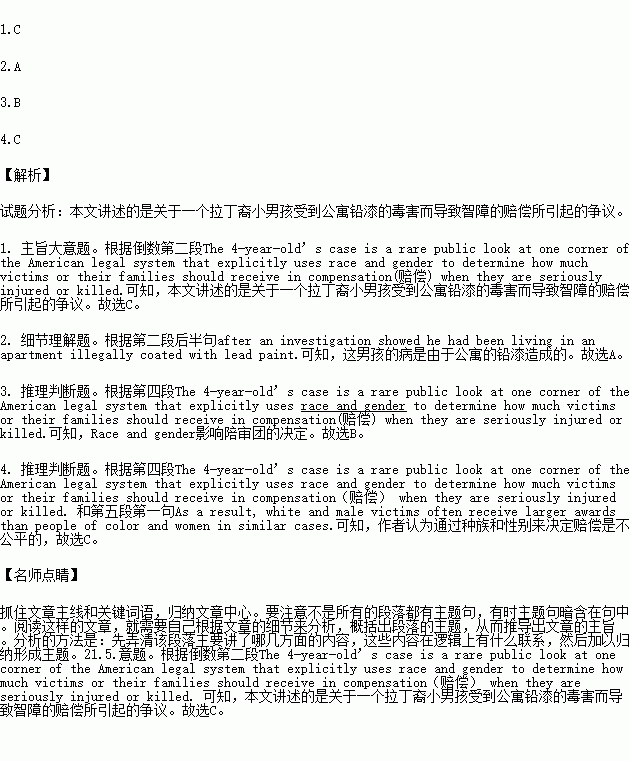题目内容
The 4-year-old boy was mentally disabled, unable to speak in complete sentences and unable to play with other children because of his violent fits(发作) of hitting and biting.
The decision facing one Brooklyn jury(陪审团)was how much a landlord should pay in damages to the boy — named “G.M.M.” in court documents — after an investigation showed he had been living in an apartment illegally coated with lead paint.
Attorneys(律师) representing G.M.M. said $3.4 million was the right number, arguing that the boy would have had a bright career ahead of him; both of his parents had graduated from college and his mother received a master’s degree. But the landlord’s defense put the figure at less than half that — $1.5 million. Attorney Roger Archibald noted that because the boy was Hispanic, G.M.M. was unlikely to attain the advanced education that would provide to such a large income.
The 4-year-old’s case is a rare public look at one corner of the American legal system that explicitly uses race and gender to determine how much victims or their families should receive in compensation(赔偿) when they are seriously injured or killed.
As a result, white and male victims often receive larger awards than people of color and women in similar cases. These differences largely derive from projections of how much more money individuals would have earned over their lifetimes had they not been injured — projections that take into account average earnings and employment levels by race and gender.
1.What is the passage mainly about?
A. Description of the boy’s damage.
B. Situation of the boy’s family.
C. Compensation for the boy’s damage.
D. Advantages of American legal system.
2.What can we conclude from the passage?
A. The boy’s illness resulted from the lead paint of the apartment.
B. The compensation mainly depends on the costs for treatment.
C. The boy would earn a lot of money without the injury.
D. The jury is in favor of the G.M.M attorneys in the boy’s case.
3.What factors seem to affect the jury’s decision?
A. Gender and education.
B. Race and gender.
C. Race and education.
D. Social status and education.
4.What does the author feel about the boy’s case?
A. Angry.B. Satisfied.C. Unjust.D. Optimistic.
 新非凡教辅冲刺100分系列答案
新非凡教辅冲刺100分系列答案
